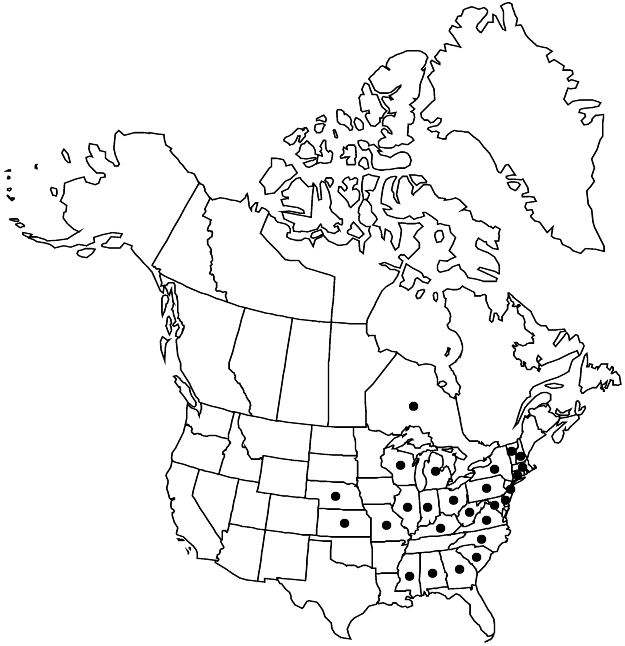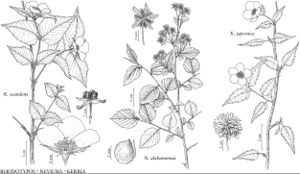Rhodotypos scandens
Bot. Mag. (Tokyo) 27: 126. 1913.
Stems reddish brown. Leaves: stipules 2–3.5 mm, membranous, margins strongly sericeous; petiole 3–10 mm; blade weakly bicolored, narrowly to broadly ovate, 4.5–7.5(–10) × 2–4(–6.5) cm, base rounded to broadly cuneate, plicate between impressed veins, apex acuminate, abaxial surface more strongly sericeous, hairs 0.1–0.2 mm. Pedicels 6–13 mm (to 30 mm and expanding in fruit). Flowers: epicalyx bractlets linear-lanceolate, leafy, 2.5–5 × 1 mm; sepals 8–15(–18) mm, thickened basally, distally leafy, fimbriate-serrate, acuminate, sericeous-strigose; petals spreading, 17–22 mm, margins entire-erose; stamens in several series mostly at sepal bases, rarely onto torus, filaments white, 4–6 mm, anthers yellow, 0.5–0.7 mm; torus 2–2.5 mm, interior densely sericeous-strigose, exterior glabrous; styles linear. 2n = 18.
Phenology: Flowering Apr–May; fruiting Jun–Sep.
Habitat: Mesic disturbed woods and thickets, especially in suburban areas
Elevation: 0–300 m
Distribution

Introduced; Ont., Ala., Conn., Del., D.C., Ga., Ill., Ind., Kans., Ky., Mass., Mich., Miss., Mo., Nebr., N.H., N.J., N.Y., N.C., Ohio, Pa., S.C., Vt., Va., W.Va., Wis., Asia (China, Japan, Korea).
Discussion
Rhodotypos scandens is expected elsewhere in North America. It is widely cultivated in Japan and infrequently in North America and Europe.
Selected References
None.
